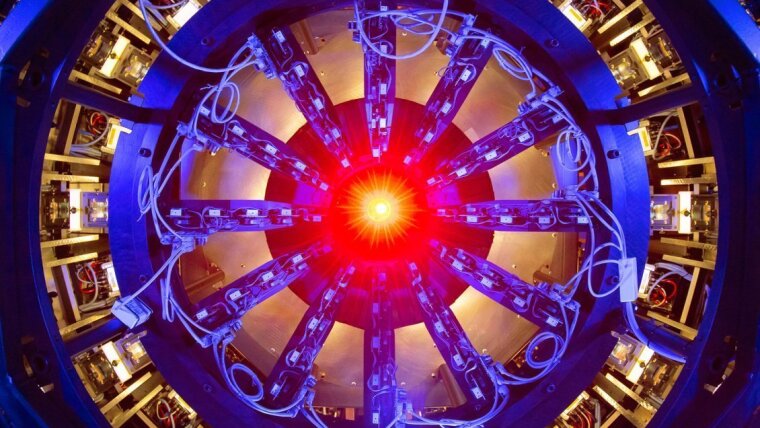
The POLARIS short pulse laser system is one of the most powerful of its kind, drawing its strength from a course of diodes, lenses, mirrors and a very homogeneous crystal. An inside look at where light is amplified to record-breaking levels and where not everything that looks like glass really is glass.
By Ute Schönfelder
Jena is home to one of the world’s most powerful fully diode-pumped laser systems. The POLARIS laser, operated by the University of Jena and the Helmholtz Institute, can reach over 170 terawatts at peak performance.
The heart of the laser system, which extends over three storeys, is the final amplifier stage: a steel frame measuring 2.5 by 2.5 by 2.5 metres, somewhat reminiscent of an oversized washing machine drum. This is equipped with 120 laser diode stacks and a massive number of cylindrical lenses. When the laser is in operation, the diodes emit synchronous flashes of light that are focused by the lenses onto a surface with a diameter of around 5 centimetres located in the middle of the steel frame (the orange area in the picture). This is where we can find the actual laser amplifier: a very homogeneous calcium fluoride crystal measuring around 6.5 centimetres in diameter and around 3.5 centimetres in thickness.
At first glance, the crystal looks like ordinary glass. But unlike glass, which has areas that are ordered and disordered to varying degrees, the crystal has a regular lattice structure. Just like glass which mainly consists of SiO2, calcium fluoride (CaF2) also forms a tetrahedral structure. But unlike glass, this structure continues regularly throughout the crystal.
The calcium fluoride crystal is additionally doped with ytterbium ions. When the bundled flashes from the laser diodes hit the crystal, the electrons of the ytterbium ions are excited, and the crystal is »pumped« with energy. When the actual laser beam is then guided through the charged crystal using several hundred mirrors along a path measuring several hundred metres, this energy is released again by the electrons and the laser pulse is amplified. For every laser photon that enters, another photon is emitted from the crystal; this process is known as »stimulated emission«.
The laser passes through the crystal seventeen times in total before reaching the target chamber in the building’s basement at maximum peak power.